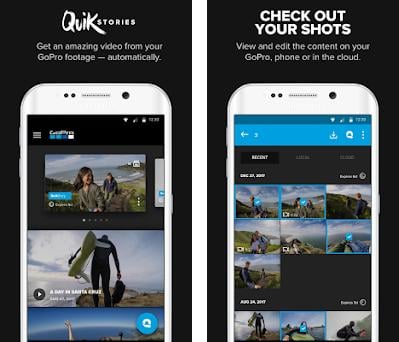
- #Can you create time lapse in quik desktop how to#
- #Can you create time lapse in quik desktop windows 10#
- #Can you create time lapse in quik desktop software#
The script is very simple and checks if the PromptOnSecureDesktop value is not 0 and will set it accordingly to 0. When successfully applied you will see it in the Intune portal: I used an AAD device group for assignment here: To deactivate the prompt on the secure desktop, you can easily use a simple PowerShell script provided on my GitHub account and deploy it via Intune to your devices.
#Can you create time lapse in quik desktop how to#
You can’t enter credentials or click on any of the buttons: How to reconfigure my devices now? You will see the dialog but you are unable to control it. Okay wait but what about Microsoft Teams when I disable the secure desktop? Yes, it would be the logical conclusion that we are able to control the UAC dialog via Teams then also, but that’s not the case.
#Can you create time lapse in quik desktop windows 10#
If you and your security department are feeling okay with that fact, you can re-configure the devices and get a working Remote Support solution out of the box from Microsoft built directly into Windows 10 called Quick Assist. This makes the device vulnerable to UAC spoofing attacks.

Without the secure desktop the UAC dialog is running like every other Windows dialog on the interactive desktop of the user. The downside is that the secure desktop is designed that no one can remote control the UAC dialog and inject something as the dialog is not running on the users interactive desktop. Instead of the black pause screen you will see the UAC prompt (without secure desktop): The simple solution here is to deactivate the “Secure Desktop” on your clients:Īs soon as this is done, the elevation prompt will be visible in the Quick Assist session and can be controlled and the remote supporter can enter credentials for elevation. All third party products normally support also the elevation scenario, but there is a way to accomplish remote support even with the Windows 10 built-in Quick Assist solution.

Third party normally has a lot of functionality which is needed in enterprise environments like extensive logging/auditing etc. It depends on what functionality you need for your support processes.
#Can you create time lapse in quik desktop software#
As soon as the Secure Desktop appears the shared screen looses track of the session and the remote supporter can’t control any UAC dialog:Īctually this is the same for Quick Assist, as soon as you try to elevate a process as supporter you loose the session and you get a black “pause” screen like this: Do I have to switch to third party software for elevation support? The Secure Desktop can not be handled by the collaboration tool Microsoft Teams. If you try to elevate a process from a standard user context you will be switched to the so called Secure Desktop, the dimmed desktop in the background is the Secure Desktop which can not easily be circumvented: I guess everyone is familiar with the User Account Control (UAC) in Windows. The main issue is the elevation of privilege’s. That’s a valid point in times where collaboration tools like Microsoft Teams are available and we have screen sharing capabilities where we can give control to someone else: That’s great but why should I care about a remote support solution anyway if I have Teams? In fact this is the same approach all the third party vendors like AnyDesk, TeamViewer, BeyondTrust Remote Support (aka Bomgar), or LogMeIn are using with their remote support software products. Even behind some firewalls we normally don’t have any issues to successfully build a connection.

This allows flexible connectivity to remote clients wherever they are. This way both clients can use outbound connections to the Microsoft cloud service and the cloud service is acting as a broker between both clients. The user who needs assistance also starts Quick Assist and connects the the same session by specifying the connection code. Quick Assist will hold a connection to the Microsoft cloud service and the supporter is given a connection code. The supporter connects to a Microsoft cloud service by starting Quick Assist and logging in with a Microsoft Account (MSA and AAD accounts supported). The lesser known built-in Quick Assist from Windows 10 implements a different way of connecting to the remote client. In general with the mobile workforce nowadays we can’t rely on solutions needing a direct connection between two devices. If you are running an environment with a modern management strategy where your clients are highly mobile and managed by cloud services, your built-in direct connection based tools like RDP or Remote Assistance are limited in usability for supporting your devices.


 0 kommentar(er)
0 kommentar(er)
